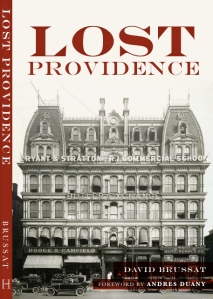
“Backward or Forward in Time,” by Yang Luo-Branch. (Courtesy of the artist.)
In his book Classical Columns Robert Adam has an essay about one of his most enticing works, “The Sackler Library: Ancient and Modern.” It traces the influences of past and present design philosophies on his building at Oxford University. He writes:
The Sackler Library sits in an important historical area. It has early nineteenth-century houses on one side and the important mid-nineteenth-century Ashmolean [Library] on the other side with its 1930s Classical extension. The design of the new building has an easy harmony with its surroundings, relating to all of them without copying any of them. Its difference is as noticeable as its similarity.
Just before this he suggests how easy it is to accomplish, at least in theory:
Until the later twentieth century, all buildings were traditional or customary. That is, either they deliberately drew upon some aspect of the past either unselfconsciously in customary or vernacular buildings or they made conscious references to the past in tradi- tional or high-style revivals. While the desire to be up-to-date and the wish to be different have always existed, there was no theory of a complete aesthetic disengagement from the past. It is this absence of complete and deliberate disjunction that allows older villages, towns, and cities to have a harmony while containing buildings of quite different styles and periods.
In short, old streetscapes engage a natural synchronicity, a variation on theme that puts the achievement of beauty, at some level, in the hands of most builders and architects down through time. Until the mid-20th century, when dissonance became de rigueur and creating beauty out of dissonance required genius, which is rare.
I have placed an illustration of the Sackler below, but on top of this post is an illustration that astutely suggests how difficult it is to recapture this natural synchronicity now that the architectural establishment has largely banned variation on a theme. The artist, Yang Luo-Branch, at my request, drew a streetscape that melds together styles from the modern to the classical – the direction architecture should move in order to revive the civic beauty lost over the past half century and more.
Making such different types of architecture merge together in easy gradual transition from one style to the next poses a real challenge. Not much can be done to avoid making the streetscape seem like a succession of distinct styles one after another, skipping from modernist eventually to classical. The vio- lence between the old and the new is just too harsh to smooth over. Yang’s illustration captures that difficulty to perfection.
The thrust of Robert Adam’s book is to promote harmony over disjunction in architecture by explaining why the former is natural and the latter unnatu- ral. Having finished reading his book, I will soon write a review of Classical Columns: 40 Years of Writing on Architecture. And thank you, Yang, for your adorable drawing!

Sackler Library, Oxford. (Flickr)



Pingback: Robert Adam: “Classic Columns” | Architecture Here and There